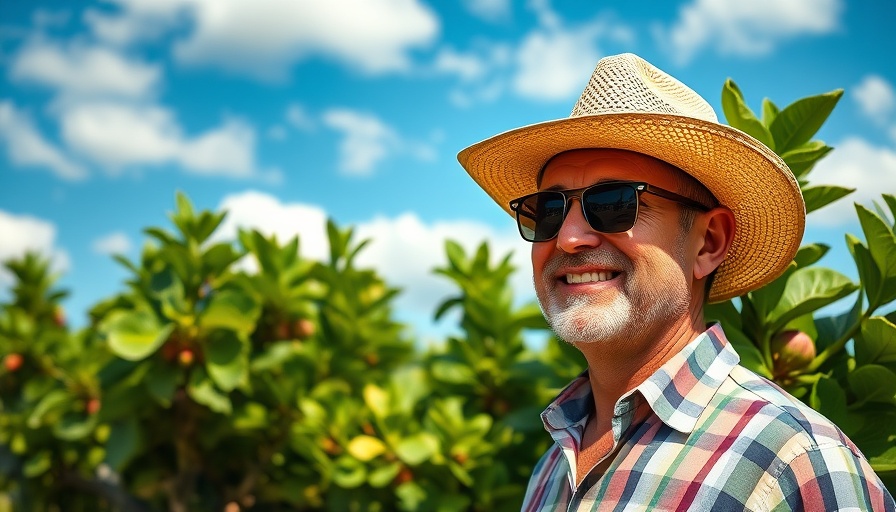
The Ultimate Guide to Enjoying Fresh Figs Year-Round
Figs are not only a delicious fruit but also a powerhouse of nutrients. Their sweet, complex flavor makes them a favorite among many, but did you know that knowing the best time to harvest figs can significantly enhance your enjoyment? In recent discussions about the best time of year for high-quality figs, we uncover some planting tips that can change the way you approach this delectable fruit.
In 'The Best Time of Year for High Quality Figs!', the discussion dives into the optimal periods for harvesting and enjoying this delightful fruit, prompting us to explore practical tips for gardening enthusiasts.
Why Timing Matters: Understanding Fig Ripening
Timing is everything when it comes to figs. Ideally, figs ripen in the warm summer months—June to September, depending on your location. This is when the figs reach their optimal sweetness and texture. During this period, it's essential to monitor your fig trees closely, as the fruit matures quickly and can spoil if left unharvested. Late summer signals the end of the first fig crop, but many varieties produce a second harvest in late summer to early fall.
Planting Tips for Growing Your Own Figs
If you're looking to grow your own fig trees and enjoy fresh figs right from your backyard, there are a few crucial planting tips to consider:
- Choose the Right Variety: Depending on your climate, select a variety suited to your area. For instance, 'Celeste' thrives in warmer regions, while 'Chicago Hardy' can handle cooler climates.
- Location is Key: Plant figs in a sunny spot with well-drained soil to promote healthy growth. Figs love sunlight—it helps enhance their sweetness.
- Watering Wisely: Ensure the fig trees are well-watered, especially during dry spells. However, avoid overwatering, as figs do not like soggy roots.
Harvesting Figs: When is the Right Time?
When it's time to harvest, look for fully swollen figs that have a slight give when you gently squeeze them. Proper ripening and harvesting are crucial to enjoying the sweetest figs. A simple rule: if it bends easily on the stem but is still attached, it’s ripe for picking. This connection to nature can be a fulfilling experience as you nurture your plants and enjoy the fruits of your labor.
Future of Fig Gardening: Sustainable Practices
As we delve deeper into sustainable living practices, growing figs can be an inspiring path. Not only do you benefit from high-quality produce, but you also contribute to a low-carbon lifestyle by reducing your dependence on store-bought fruit. Fig trees are relatively low-maintenance and provide a rich yield, making them an excellent addition to any garden.
Real-life Impact: Fostering Community Through Fig Growing
Sharing figs—whether through cooking, baking, or just eating them fresh—can create a strong community connection. Imagine harvesting fresh figs and inviting friends over for a healthy meal where figs are the star of the dish. Incorporating personal stories of sharing homegrown produce can highlight the social aspects of planting and growing foods.
If you’re inspired to embrace the seasonal bounty of figs and enhance your gardening skills, why not start your fig garden today? Not only will you have fresh fruits to enjoy, but you will also contribute to a sustainable lifestyle. Engage with your community, share knowledge, and savor the sweetness of homegrown figs.
 Add Row
Add Row  Add
Add 




Write A Comment